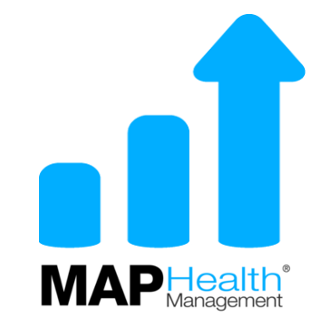How to Improve Your Communication to Improve Your Outcomes
February 8, 2016 Jacob Levenson

And, astute business leaders understand that competent organizational communications are required in order to be successful. Whether it be in person or through telecommunications, effective transmission of information lays the keystone to every successful operation.
The same holds true for addiction treatment providers. Effective communication gives providers the ability to maximize their potential for treatment success while continuing to welcome a steady stream of new patients.
Increasingly, addiction treatment providers are being required by health insurance payers to demonstrate their outcomes and rates of treatment success. This movement in the field of behavioral health will continue because this practice has long been an established factor in other forms of healthcare delivery and chronic disease management.
Rates of relapse and recidivism are costly to the provider, the payer and the patient. Relapse from chronic illnesses costs the nation untold billions of dollars each year.
Advancements in Telehealth
In addition to the need to contain healthcare costs, advancements in telehealth are giving the addiction treatment space opportunities to expand their modalities.
With a global acceptance of telecommunications, providers today have an increased ability to maintain contact with patient alumni and offer extended support as they transition from residential treatment to long-term recovery.
Many patients view these communication tools as efficient, convenient forms of treatment support and providers are able to maintain a better connection following discharge.
The addiction treatment field has begun to recognize that extended recovery support for discharged patients helps to increase the likelihood of maintaining long-term recovery.
Early indicators in empirical data report for discharged patients who experience a one-time use event or relapse, can maintain contact during a return to addictive lifestyle. A use event is not ideal, however, communication can be maintained between provider and patient during this time.
Post Recovery Support
Return to recovery without readmission is far more likely when communication had been previously established. Additionally, when patients are discharged with a comprehensive post-treatment recovery support plan, family members, loved ones and friends can be included in the communication network.
Because addiction is a family disease, it is understood that loved ones benefit from support during this transition. Loved ones also offer an additional perspective of the overall recovery process. Addiction affects the family unit and recovery support can provide a powerful resource for everyone affected.
The extended support following treatment suggests the need for fewer readmissions which lowers the healthcare tab. As a result, payers have begun to explore reimbursement models for this provision, providing further incentive to reduce readmissions and pave the way for more patients to receive treatment.
For the provider, successful addiction treatment will result in a healthy revenue stream.
From the payer perspective, it is understood that the quality of the operational process is an important driver of overall performance in healthcare.
The reliable delivery of both evidence-based practices and patient-centered care have long been established as key components to improving healthcare outcomes and maintaining costs.
When treatment success rates are high, readmission rates are low and costs can be better anticipated payers prefer predictability.
However, when recidivism is high, costs continue to rise. Repetitive treatment is costly and payers consider the expenses of treating a discharged patient who receives post-treatment recovery support for addiction (a chronic-care model) to the expense of one treatment episode (an acute-care model) that is statistically likely to need to be repeated.
With the knowledge that payers have begun to compare the costs of successful patient treatment to the costs of readmission, it is important for providers to demonstrate the value of their services. Payers recognize the disparity among the services that are delivered and the onus for effective communication is on the provider.
Improved communication with payers begins with a thorough understanding of reimbursement systems and processes and improved communication in this landscape will ultimately result in reimbursement. Despite coming from what may appear to be opposing sides, providers and payers want the same thing: long-term treatment success.
Developing a Communication Management Strategy is one way for providers to proactively approach the challenge of communicating their message. Both internal and external communication is important in order to maintain consistent messaging whether it be to staff, patients, payers and/or in advertising or educational efforts.
The development of strategic steps that work to define and guide the mission and vision for comprehensive addiction treatment, including extended care and the measurement of success rates, will help providers stay on track and manage the expectations of both payer and patient.
Five Steps to a Communication Management Strategy:
- Patient education and engagement
- Payer expectations
- Brand messaging
- Telecommunications
- Reporting success rates
Addiction is widespread and rampant in this country and the disease does not discriminate. It kills the young and elderly, the rich and poor, the educated and illiterate, and everyone in-between.
The drug epidemic is being compared to the devastation of AIDS in the 80's and the ability to foster communication is a vital element for every provider. Through collecting and reporting healthcare outcomes data on discharged patients, providers can demonstrate to payers and consumers the value of their services.
With the provision of post-treatment support, we have entered the stage of addiction treatment where a patient's discharge date is just the beginning.

Jacob Levenson founded Austin-based MAP Health Management, LLC in 2011 and has served as Chief Executive Officer since its inception. MAP is a provider of comprehensive outcome data, aftercare programs and revenue cycle management to addiction treatment providers across the country. Levenson passionately architects and deploys data-based solutions and healthcare services that empower patients by mitigating potential relapse, increasing predictability for insurance payers and overall outcomes for treatment providers.








